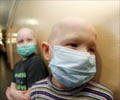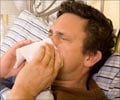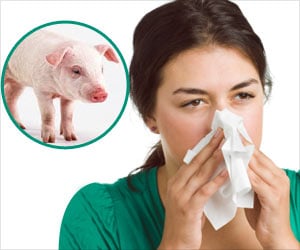New data from Mexico, the epicentre of the swine flu pandemic, has confirmed that young people are most at risk of catching the A(H1N1) virus but elderly patients are most at risk of dying from it.
New data from Mexico, the epicentre of the swine flu pandemic, has confirmed that young people are most at risk of catching the A(H1N1) virus but elderly patients are most at risk of dying from it.
The study bolsters the belief that the pathogen is not as virulent as first feared but also stresses the need for caution, as a mutation into a more lethal form cannot be ruled out.Epidemiologists led by Victor Borja-Aburto of the Mexican Institute for Social Security looked at data for 63,479 people who had been treated for flu-like symptoms in public clinics from the start of the scare in April until the end of July.
Of the 6,945 cases confirmed by tests as H1N1, 56 percent occurred among people between 10 and 39 years, an age group with a high risk of contact through social interaction.
There were far fewer cases among older patients, which suggests that people in this age group were exposed in the past to a cousin to swine flu and may have gained some immunity, the author say.
But when analysed for mortality, a "J-shaped curve" revealed a preponderance of deaths among the elderly.
Among patients aged between 60 and 69, the death rate was 5.7 percent, compared with only 0.9 percent among patients aged between 20 and 29 years.
Advertisement
It also strengthens warnings that people with chronic underlying disease are especially vulnerable. Individuals in this category increased their risk of death sixfold.
Advertisement
But the real number of swine flu infections is likely to be very much higher as many countries have stopped counting individual cases, says the WHO.
In addition, the count does not include people who have only mild symptoms, or no symptoms at all, and thus do not bother seeing a doctor.
The mortality rate from swine flu has been variously estimated at between 0.2 and 1.23 percent, according to the country or region or social group that is analysed.
At its lower range, this estimate is akin to the death toll from ordinary, so-called seasonal flu, of around 0.1 percent.
But even the highest figure is still only half of that for the 1918 Spanish flu, where the mortality rate is estimated to have been at least 2.5 percent. Tens of millions of people were killed in that event.
"Some researchers believe, with the information available up to now, that the present H1N1 influenza virus will not cause a pandemic on the scale of those during the 20th century," said the new study, published online on Thursday by The Lancet.
"This pandemic might not be the one we expected; however, the virus is evolving and the threat continues."
Source-AFP
SRM









